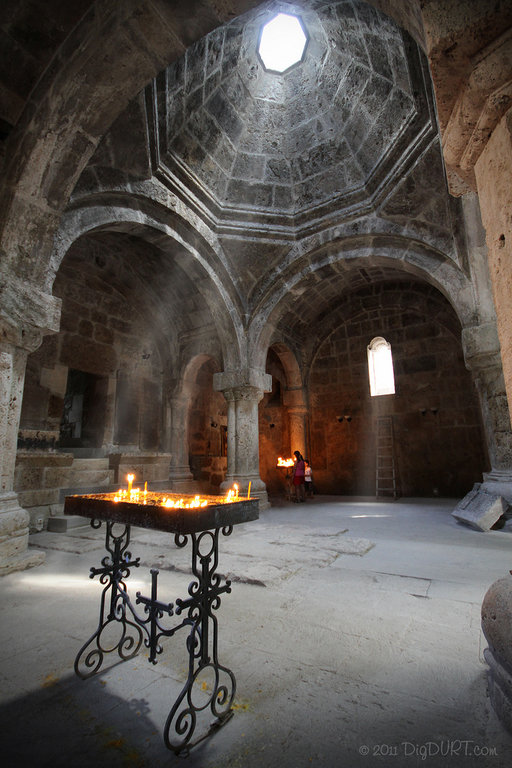
The Play of Eagles
We are in a long, empty hall that has been built with stones. There are three wood tables in the hall: two of them are long and stand on left and right sides; the third one is in the middle of them, at the wall. There are wooden chairs only at one side of the table, the side that is against the wall. The table in the middle has three chairs, one of which is especially beautifully curved. All others are made in the same manner.
“What is this place for?”
“I don’t know. I think, they have some council meetings here.”
“No, it’s a dining room.”
I see monks sitting at tables. They have some meal in front of them. The Superior of the monastery stands up from his beautifully curved chair. He wears the Jeweled cross. He has a long, black beard. He makes the sign of cross, blessing the brothers to have supper. They eat silently…
As we leave the refractory, the Superior of the monastery greets us. He is wearing glasses and has a short, partially white beard. The pectoral cross with decorations shines on his chest. Having hands in his pockets, he is retelling us the history of the monastery. He also mentions the old legend, according to which people saw eagles flying over this place while building the monastery here. So, they called the place “Haghartsin” or “the play of eagles”.
I’m entering into the main church. I’m awaiting to see the frescoes and the sanctuary separated with an iconostasis from the rest of the church. The walls, however, are empty. There are stairs leading to sanctuary. The iconostasis is absent, so you can see the altar from down. The stair steps are unusually high.
“The idea is that you have to bow while entering there.”
That’s true: as you go up the stairs, your body naturally bends, bows down. You enter the building inside the building. Then there is the altar in front of you, in an apse, on a still higher place than you are, but without the iconostasis. The altar is covered with a dark red cloth; there are: a cross, the Gospel and a chalice on it. On each sides of altar there are small chambers for the monks to pray in solitude.
Another group of visitors is coming in. They are holding the wax candles. A woman is stepping front, explaining something to others. She seems like a teacher, they seem like students.
When the explanation is over, one of the students is making the sign of cross with her right hand, putting it first on her forehead, then – on her chest, then – on the left shoulder, and finally – on the right one. Then she is laying her elbows on the carpet in front of the altar and joining her hands, she is starting to chant.
I don’t understand a single word, I can only catch the name “Jesus”, but the music is filling my body.
“What is the chant about?”
“It’s like: Lord, have Mercy”.
There is a priest in the altar and people wait for the Holy Communion. The smell of frankincense warms the cold stone walls. The wax candles shine in the dark. And there is a Shepherd who has one hundred sheep. There are eagles eager to kidnap them. They fly above them, in a circle. One of them catches a sheep. The Shepherd sees it and rushes to save it. He saves it. He saves them all.
The chant is over. I’m going out. It’s freezing — the winter is on its way to repaint the colors of autumn…

Nana Abuladze
Latest posts by Nana Abuladze (see all)
- The Sun of Truth – December 29, 2018
- Frankfurt, 20.. – November 19, 2018
- La Cetra – November 19, 2018




